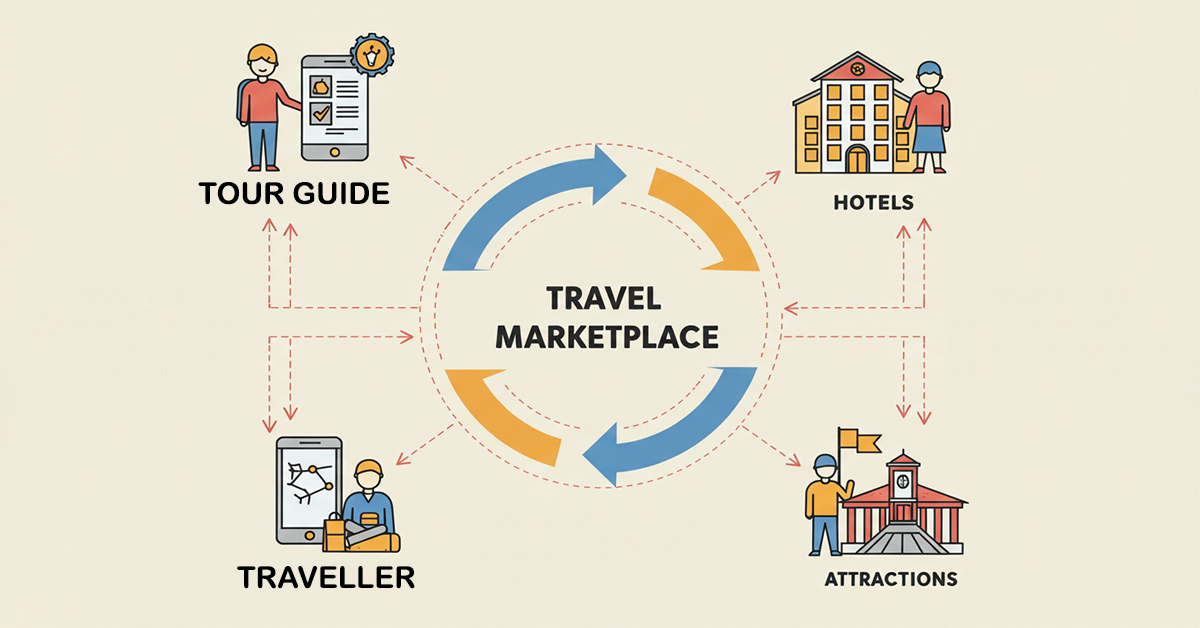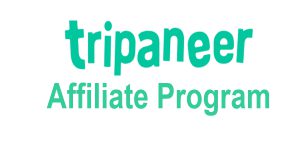Step-by-Step Guide to Starting a Successful Travel Marketplace
The travel industry is a multi-trillion-dollar market, with people constantly seeking new destinations, accommodations, and unique experiences. With the rise of digital platforms, starting a travel marketplace has become a lucrative business opportunity that can generate income.
A travel marketplace acts as a bridge between travellers and service providers like hotels, tour guides, and experience hosts. Unlike traditional travel agencies, marketplaces operate on an automated system, allowing business owners to earn commissions without actively managing bookings.
If you dream of making money while travelling or working remotely, a travel marketplace can be the perfect source of income. In this guide, we’ll walk you through the process of building, launching, and monetizing your travel marketplace.
1. Understanding the Travel Marketplace Model
What is a Travel Marketplace?
A travel marketplace is an online platform that connects travellers with service providers, such as accommodations, tour operators, transportation providers, and experience hosts. Instead of managing bookings directly, the marketplace facilitates transactions between users and earns revenue through commissions or listing fees.
Popular examples of travel marketplaces include:
• Airbnb – Connecting travellers with short-term rental hosts
• Viator – Offering tours and experiences worldwide
• Expedia – Aggregating hotels, flights, and activities
How It Differs from Traditional Travel Agencies
Unlike travel agencies that manually handle bookings, a travel marketplace operates automatically using a booking system. The platform owners don’t need to own hotels or run tours—they simply connect buyers with sellers and take a commission.
2. Researching the Travel Industry
Before diving into building your marketplace, it’s crucial to research and understand the travel industry trends and potential customer base.
Identifying Your Niche
Instead of competing with giants like Airbnb or Expedia, focus on a unique niche that has growth potential. Some profitable travel marketplace niches include:
• Adventure tourism (hiking, scuba diving, safaris)
• Eco-tourism and sustainable travel
• Local cultural experiences and homestays
• Luxury travel for high-end clients
Competitor Analysis
To stand out, research competitors and identify market gaps. Tools like SEMrush, Ahrefs, and Google Trends can help analyze industry demand and competition.
3. Choosing a Business Model for Your Travel Marketplace
There are multiple ways to earn income from a travel marketplace. Choosing the right business model depends on your niche and target audience.
Popular Business Models:
1. Commission-based Model – Earn a percentage from every booking (e.g., Airbnb, Booking.com)
2. Subscription Model – Charge providers a monthly fee to list services (e.g., SaaS-based platforms)
3. Listing Fee Model – Service providers pay per listing (e.g., classified ad platforms)
4. Hybrid Model – Combining different monetization methods
Each model has pros and cons, so choose one that aligns with your revenue goals.
4. Developing a Travel Marketplace Website
Your website is the core of your business, so building a user-friendly, fast, and SEO-optimized platform is crucial.
Key Features Your Travel Marketplace Needs:
• User Profiles – For both travelers and service providers
• Search & Filters – To help users find listings easily
• Online Booking System – With real-time availability
• Payment Gateway – Secure and multiple payment options
• Reviews & Ratings – To build trust among users
Choosing the Right Platform
You can either:
1. Use a Marketplace Builder – Shopify, WordPress (WooCommerce), Sharetribe
2. Develop a Custom Website – Hire a professional software developer for a unique platform
Both options have pros and cons, but if you’re a beginner, using a marketplace builder can save time and money.
5. Sourcing Travel Listings and Partnerships
Once your travel marketplace is set up, the next step is to populate it with travel listings. Without vendors offering services like accommodations, tours, or unique experiences, your platform won’t attract customers. Establishing strong partnerships with service providers ensures a steady flow of bookings and revenue.
How to Onboard Vendors, Tour Guides, and Accommodation Providers
Getting vendors to list their services on your platform is crucial for success. Here’s how you can onboard them:
1. Direct Outreach
• Contact Local Businesses – Reach out to hotels, tour operators, and experience providers in your target market.
• Offer Free Listings Initially – To attract early adopters, allow vendors to list their services for free for a limited time.
• Cold Emails & Calls – Send personalized emails to potential partners explaining the benefits of joining your marketplace.
2. Partnering with Travel Influencers & Bloggers
• Travel bloggers and influencers already have connections with tour operators and hotels.
• Offer them incentives to refer vendors to your platform.
3. Affiliate & Referral Programs
• Create a referral program where existing vendors earn a commission for bringing in new providers.
• Join affiliate programs with established travel companies to list their services on your marketplace.
4. Using Travel Industry Platforms
• Sign up on LinkedIn, TripAdvisor, and local business directories to connect with service providers.
• Attend travel expos and networking events to find business partners.
Building Relationships with Travel Service Providers
Once you onboard vendors, maintaining strong relationships is key to ensuring long-term success. Here’s how you can do it:
1. Provide a Smooth Onboarding Experience
• Offer a step-by-step guide on how to list services.
• Provide dedicated support to help vendors set up their profiles.
2. Offer Competitive Commission Rates
• Keep commission rates lower than competitors like Airbnb or Booking.com to attract more vendors.
• Consider tiered pricing models where vendors pay less as they generate more bookings.
3. Maintain Regular Communication
• Send monthly newsletters with platform updates, promotions, and success stories.
• Create a vendor-only community (Facebook group, Slack, or Discord) to encourage engagement.
4. Provide Marketing Support
• Help vendors by promoting their listings on social media and blogs.
• Offer premium listing options where vendors can pay for better visibility.
Ensuring Quality Control and Customer Satisfaction
A successful travel marketplace depends on customer satisfaction. If travellers have bad experiences, they won’t return, and vendors will lose bookings.
1. Set Clear Vendor Guidelines
• Require vendors to provide detailed descriptions, high-quality photos, and accurate pricing.
• Enforce minimum quality standards for accommodations and tours.
2. Implement a Review & Rating System
• Allow customers to leave reviews and rate their experiences.
• Use verified bookings to prevent fake reviews.
3. Monitor Customer Complaints
• Set up automated surveys to collect feedback after every booking.
• Have a dispute resolution system for handling complaints.
4. Conduct Regular Vendor Audits
• Remove or suspend vendors who receive multiple complaints.
• Offer training and support to help vendors improve their services.
By focusing on high-quality listings, strong partnerships, and great customer service, your travel marketplace will attract more users and generate sustainable income.
6. Monetizing Your Travel Marketplace
Once your travel marketplace is live, the next step is to generate income. There are multiple ways to monetize your platform, and you can combine different strategies for maximum profitability.
Revenue Streams for Travel Marketplaces
1. Commission-Based Earnings – The most common model where you earn a percentage from each booking. Airbnb and Booking.com follow this method.
2. Subscription Plans for Service Providers – Charge vendors a monthly or annual fee to list their services on your platform.
3. Featured Listings & Promotions – Offer paid advertisements where vendors can pay to appear at the top of search results.
4. Affiliate Marketing – Partner with travel-related companies (hotels, airlines, insurance) and earn a commission on referrals.
5. Advertising Income – Use Google AdSense or direct advertising to generate revenue from website visitors.
6. Upselling & Cross-Selling – Offer additional services like travel insurance, airport transfers, or premium experiences for extra profit.
Choosing the right mix of revenue streams will ensure sustainable income.
7. Marketing Strategies for Growth
No matter how great your marketplace is, you won’t make money unless people find and use your platform. Marketing is key to attracting travellers and service providers.
SEO Strategies for Organic Traffic
• Keyword Research – Use tools like Google Keyword Planner and Ahrefs to find high-traffic search terms.
• Content Marketing – Create travel guides, blogs, and destination reviews to drive organic traffic.
• On-Page Optimization – Use proper headings, meta descriptions, and image alt text.
• Backlinks & Guest Posting – Partner with travel bloggers to build authority and rank higher.
Social Media & Influencer Collaborations
• Promote listings through Instagram, TikTok, and Pinterest.
• Partner with travel influencers to showcase experiences on your platform.
• Run giveaways and contests to increase engagement.
Paid Advertising & Retargeting
• Use Google Ads and Facebook Ads to drive targeted traffic.
• Implement retargeting campaigns to bring back visitors who didn’t book.
• Offer discount codes to new users to encourage first-time bookings.
8. Leveraging Technology for Automation
Automation is essential for scaling a travel marketplace while keeping it profitable. The more automated your platform, the less hands-on management it requires.
AI & Chatbots for Customer Support
• Use AI-powered chatbots to answer FAQs and assist customers 24/7.
• Reduce manual customer service efforts with automated responses.
Automated Booking & Payment Systems
• Integrate Stripe, PayPal, or Square for seamless payments.
• Allow automatic confirmations and cancellations to avoid manual intervention.
Data Analytics for Business Growth
• Use Google Analytics and heatmaps to understand user behaviour.
• Track which listings perform best and optimize low-performing ones.
• Implement AI-driven personalization to recommend relevant travel options.
Automation saves time and makes your marketplace more efficient, leading to higher profits with minimal effort.
9. Legal and Compliance Considerations
Running a travel marketplace involves dealing with customer’s personal information, payments, and vendor contracts. Ensuring legal compliance is essential to avoid liabilities.
Key Legal Steps:
1. Business Registration – Register as an LLC or corporation to protect yourself legally.
2. Terms of Service & Privacy Policy – Clearly outline platform rules, refund policies, and data privacy terms.
3. GDPR Compliance – If dealing with EU customers, ensure your site complies with data protection laws.
4. Vendor Contracts – Draft agreements with service providers to avoid disputes.
Consulting a business lawyer ensures your platform is legally protected from potential risks.
10. Scaling and Expanding Your Travel Marketplace
Once your marketplace gains traction, it’s time to scale for bigger profits. Expanding your services and reach will attract more customers and vendors.
Ways to Scale Your Travel Marketplace:
• Expand to New Destinations – If you started with one city or country, add more locations.
• Introduce Additional Services – Offer flights, car rentals, or travel insurance.
• Collaborate with Big Travel Brands – Partner with airlines, hotels, and tourism boards.
• Enhance Mobile Experience – Develop a mobile app for easier bookings and better customer retention.
• Leverage Influencer Marketing – Work with well-known travel influencers to boost brand credibility.
Scaling your marketplace requires strategic planning, but it increases revenue potential significantly.
Final words
Starting a travel marketplace is one of the best ways to build profitable income in the booming tourism industry. By choosing the right niche, business model, and marketing strategy, you can create a successful platform that generates revenue with minimal hands-on management.
With automation tools, SEO strategies, and strong partnerships, your travel marketplace can grow into a profitable online business. If you’re passionate about travel and entrepreneurship, now is the time to take action and build your own platform!
FAQs
1. How much does it cost to start a travel marketplace?
The cost depends on whether you use a marketplace builder ($500-$5,000) or develop a custom website ($10,000+). Additional costs include marketing and legal setup.
2. How long does it take to make an income from a travel marketplace?
It usually takes 6-12 months to see steady revenue, depending on marketing efforts and user adoption.
3. Do I need technical skills to create a travel marketplace?
No, you can use no-code platforms like Sharetribe or hire developers to build your site.
4. What are the biggest challenges in running a travel marketplace?
Challenges include attracting vendors, handling customer disputes, and competing with established platforms.
5. Can I start a travel marketplace without an initial investment?
Yes, you can start with free marketplace builders and bootstrap growth using organic marketing strategies.




